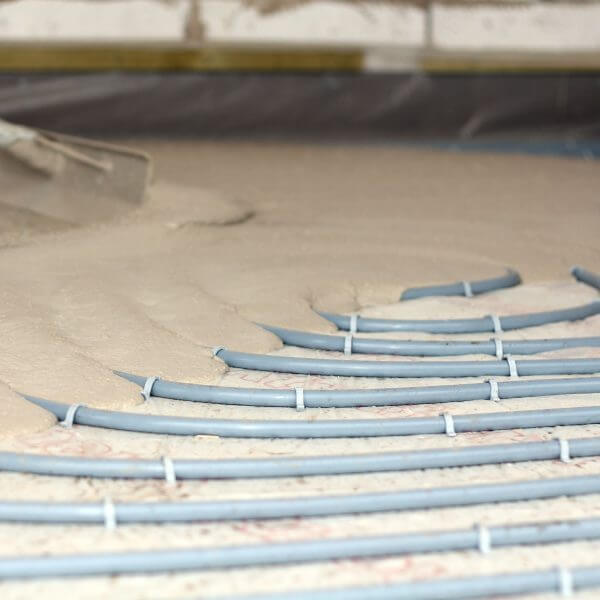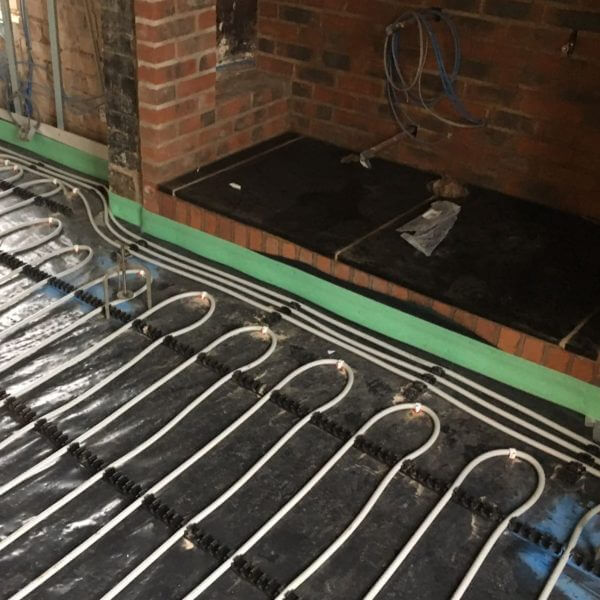Taking Care of Your Screeded Floor, the Complete Aftercare Guide
So you’ve just had your floor screeded, or you’re thinking of commissioning a liquid screeder, what happens after the building team has come and gone? Whether you have laid liquid screed for underfloor heating or to retouch your floors, this complete guide will help you understand exactly what to do and when.
Letting it Set & Dry
Within 24–48 hours, your flowing concrete or anhydrite screed floor will be safe to walk on. Bear in mind that walkable is not the same as buildable, you’ll still need to wait up to 7–14 days for the screed to dry before it’s solid enough to build on. You should avoid moving heavy objects over the floor or subjecting it to heavy footfall traffic until 2–4 days have passed.
During the 24-48 hour period, you shouldn’t let direct sunlight reach the floor because this can interfere with the setting process. After that time has passed, doors and windows should be opened to help facilitate the drying process.
Why Are Liquid Screed Drying Time Figures in a Range?
Liquid screed drying times depend on the conditions of the environment. If the air is cold and humid, that will slow down the drying rate. Meanwhile, if conditions are warm and dry, this optimises the drying time.
If you’re using a quick drying anhydrite screed, this blend is designed to set and dry faster, cutting down the time you spend waiting. But drying also depends on the thickness of the screed. If it is thicker than 40mm, the drying rate will start to slow down closer to that depth. And if you have underfloor heating? The commissioning process will speed up the drying too.
All in all, this makes it difficult to make a one-size-fits-all prediction. If you hire our liquid screed Birmingham or Shropshire team, our surveyors can analyse the site’s conditions, and you’ll be given more accurate calculations on drying time.
Laitance Removal
If you have laid anhydrite screed, this will need to be sanded down after 7 days. This is because laitance, a powdery/flaky layer of cement, builds on the surface of the screed. If you don’t sand this, it can interfere with the drying process and is unstable to build upon.
If you cover laitance with tiling, this can lead to cracks in grouting and loose tiles because it hasn’t bonded properly with the subfloor. Therefore, it’s best to call our liquid screed Birmingham aftercare team to do light laitance sanding over the anhydrite screed.
Commissioning Your Underfloor Heating
Is your liquid screed covering underfloor heating? After 7 days have passed, it should be ready for commissioning, depending on the advice of the team that installed it. You’ll need to set the boiler flow temperature to 25°C or the temperature your installer recommends.
You’ll need to leave it like that for 3 days, then raise the temperature by 5°C each day. Your installer will have given you a target temperature to reach, and this should not exceed 50°C. When this temperature has been reached, leave it for another 3 days, then reduce the temperature by 5°C every day back to the starting level.
When you’re back to your starting temperature, leave it off for 48 hours. If all goes well, you’ll be able to use your underfloor heating normally from that point onwards. Do make note of the instructions your installer gives, as these figures can change based on your property’s unique conditions.
Installing a Floor Covering
When the screed has dried enough (moisture testing should be carried out to confirm this) your floor will finally be ready to cover and furnish. Be sure to check the following before you lay anything down:
- The floor is clean from dust, dirt, or debris
- Laitance has been sanded and swept away
- Your underfloor heating has been successfully commissioned
- There are only small hairline cracks where they are expected (at planned joints)
Remember, if your liquid screed is for underfloor heating, the floor covering you’re using should be suitable to cover it. For example, tiles should use an adhesive that can expand and contract from heating without cracking.
If at any point you experience problems with your screed or have a question, our liquid screed Birmingham aftercare team is only one call or email away.




Where To Find Us